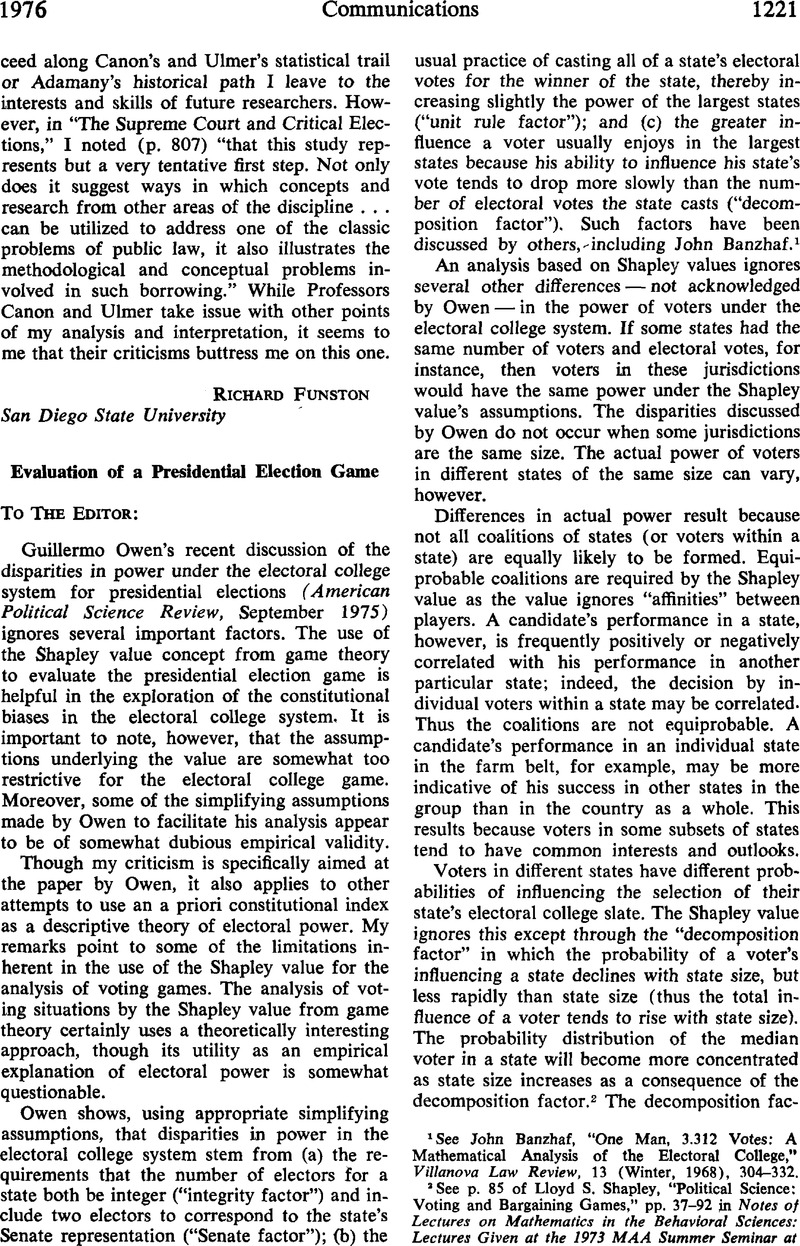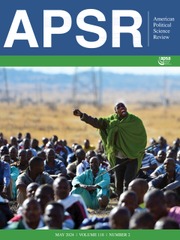Article contents
Evaluation of a Presidential Election Game
Published online by Cambridge University Press: 01 August 2014
Abstract

- Type
- Communications
- Information
- Copyright
- Copyright © American Political Science Association 1976
References
page 1221 note 1 See Banzhaf, John, “One Man, 3.312 Votes: A Mathematical Analysis of the Electoral College,” Villanova Law Review, 13 (Winter, 1968), 304–332Google Scholar.
page 1221 note 2 See p. 85 of Shapley, Lloyd S., “Political Science: Voting and Bargaining Games,” pp. 37–92Google Scholar in Notes of Lectures on Mathematics in the Behavioral Sciences: Lectures Given at the 1973 MAA Summer Seminar at Williams College, Williamstown, Massachusetts. Notes by Selby, Henry A., Mathematical Association of America, 1973Google Scholar.
page 1222 note 3 See Banzhaf, p. 308.
page 1222 note 4 See Owen, Guillermo, “Political Games,” Naval Research Logistics Quarterly, 18 (Sept., 1971), 345–355CrossRefGoogle Scholar. This is also discussed at pp. 76–78 of Shapley.
- 2
- Cited by



Comments
No Comments have been published for this article.